DMM Brymen BM235
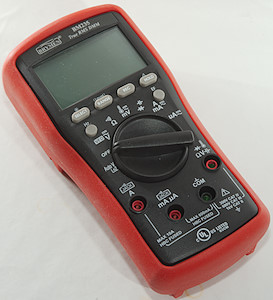
Brymen is one of the good DMM manufactures and have a large selection of DMM's in their program. This meter is a mid-range meter.
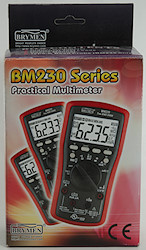

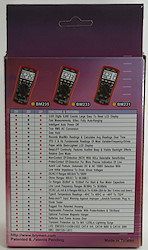

The meter arrived in a red box with a feature list for their BM23x series of meters (BM235 is the best of them).


The probes are rated for 1000V and 10A in CATIV environment, this is a very good rating and way better than the meter.

The removable tip cover must be on for best safety.
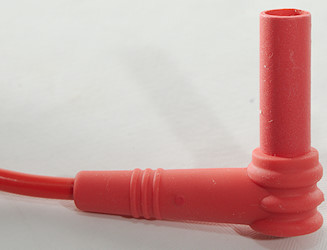
The plug is fully shrouded and full size.
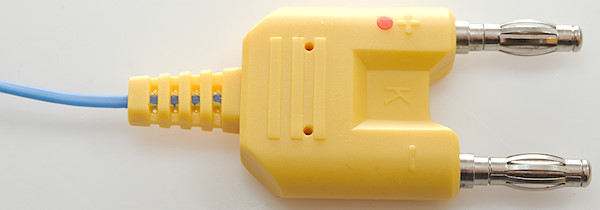

The thermocoupler has a single connector to the multimeter, that is considerable better than the two loose banana plugs and the general construction looks nice.
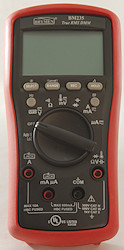
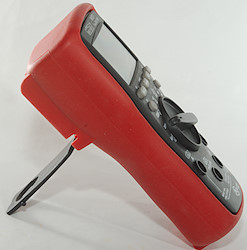
The tilting bale is just about stable enough to change range and use switches with one hand. The switch is a bit on the hard side.
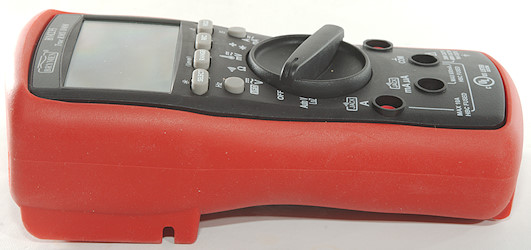
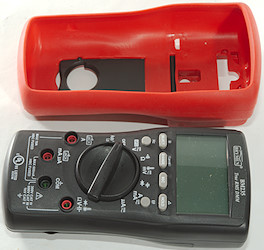
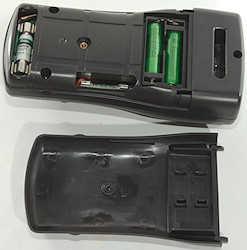
Before it is possible to open the battery cover the sleeve must be removed.
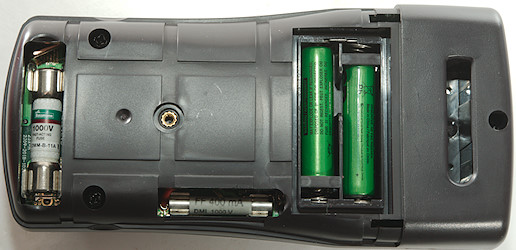
Both the 400mA and the 10A fuse is accessible from the battery compartment.
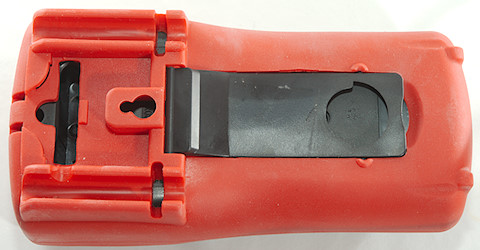
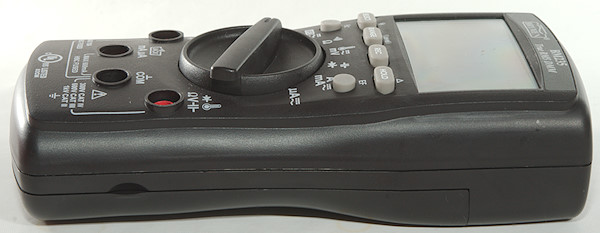
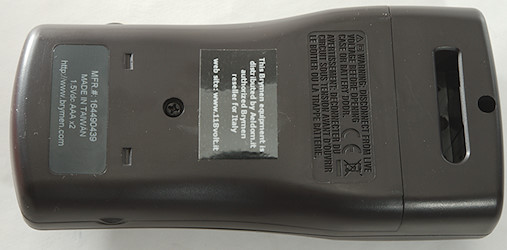
Display
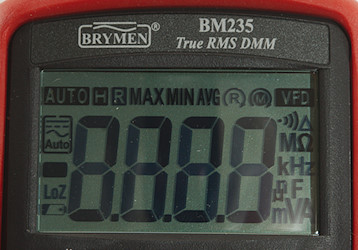
The above picture shows all the segments on the display, not all are used by the meter.
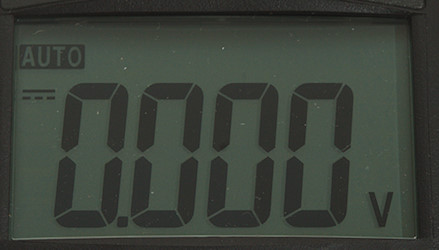
Typical display during usage, it will show the number and what measurement is selected.
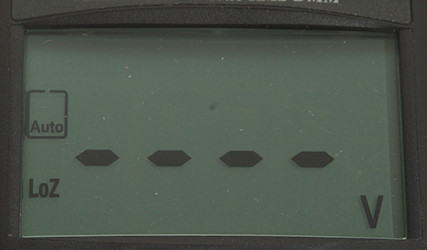
The Low-Z range will automatic detect AC/DC and do not show any voltage before it can decide that.
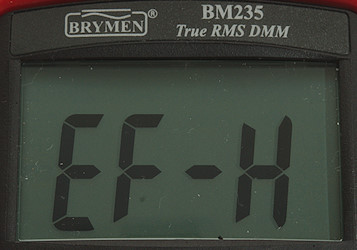
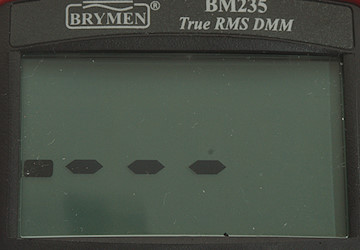
The electric field detection (NCV) shows from 1 to 5 bar depending on field strength. There are two ranges EF-L(ow) and EF-H(igh).
Functions

This meter will remember what was selected with SELECT and start in the same function next time, power off will not reset this.
Buttons:
- Select: Selects secondary ranges for each position on the range switch, hold down to turn on backlight.
- Range: Switch to manual ranging and will also change range, hold down to get back to automatic, in NCV it will change between EF-H and EF-L
- Rec: Starts recording min/max/avg. values, press the button to change between min/max/average/actual, hold down to exit.
- Hold: Will freeze the display, hold down to use current value as reference and show all further readings relative to this.
- Hz: Select Hz display
- EF: Select electric field detection (NCV), the RANGE button can be used to switch between high and low sensitivity.
Rotary switch:
- Auto V LoZ: Select Low-Z mode, work both for AC and DC, but is locked to 600 and 1000V range
- Off: Meter is turned off
- V: Show DC and AC voltage with an optional low pass filter (VFD) for AC, use SELECT for AC/VFD/DC and "Hz" for frequency.
 : Resistance and continuity.
: Resistance and continuity.
- mV: Show DC and AC millivolt, use Select for AC and "Hz" for frequency. This is also the temperature range (Select again).
 : Diode and capacitance.
: Diode and capacitance.
- mA A: Current DC and AC, use Select for AC and "Hz" for frequency.
- uA: Current DC and AC, use Select for AC and "Hz" for frequency.
Input

- 10A: High current, it can only withstand 10+ ampere for a short time (Fuse is 10A). Meter will select mA or A depending on where probe is plugged in.
- mAuA: The lower current ranges, the selector switch will change between two different shunts (Fuse is 400mA, input is rated for 600mA).
- COM: The common terminal for all ranges.
- xxx: All other ranges.
Measurements
- Volt and frequency
- Frequency input requires a zero crossing.
- Max/min needs about 310ms to capture a voltage.
- At 0.1Vrms input frequency range is from 3Hz to 270kHz
- At 1Vrms input frequency range is from 2Hz to 330kHz
- 1 VAC is 5% down at 1.6kHz, in VFD mode it drops at 260Hz
- VFD only works in 600.0 and 1000 volt mode and reduces bandwidth to about 100Hz for 1% precision
- Input impedance is 10-11Mohm on DC and AC, also in mV range.
- mV DC/AC and frequency input resistance will drop above 2V to 50kohm at 8V and 4kOhm at 30V
- Low-Z is 10Mohm at low voltage, 8Mohm at 50VDC, at 230VAC it starts at 2kOhm, but will increase fast to 50kOhm
- Voltage ranges rated to 1100V AC/DC
- mV range rated to 1000V AC/DC
- Current
- Ranges rated to 1000V AC/DC
- uAmA range is protected by a 0.4A/1000V 6x32mm fuse
- A range is protected by a 11A/1000V 10x38mm fuse
- Ohm, Continuity, diode and capacitance
- Ohm needs about 0.8s to measure 100ohm, this is very fast
- Ohm is 1.8V open and 0.16mA shorted
- Continuity is fast (About 20ms).
- Continuity will flash background light in addition to sounding buzzer
- Continuity beeps when resistance is below 161ohm
- Continuity is 1.7V open and 0.16mA shorted
- Diode range uses 3.2V, max. display is 3.000V at 0.025mA, max. current is 0.33mA shorted
- 1000uF takes about 7 seconds to measure (First estimate in 3 seconds).
- Ranges rated to 1000V AC/DC
- Miscellaneous
- Current consumption of meter is 2.5mA(23mA with backlight)
- Meter works down to 1.7V where meter turns off, battery symbol show at 2.5V.
- Backlight fades with falling voltage, but works down to meter turns off
- Reading is stable until about 1.8V where it increase significantly (5.000V -> 5.206V)
- The meter need one or two display update to reach the final value.
- Viewing angle is good
- Display updates around 3 times/sec
- Backlight will automatic turn off in about 10 minutes.
- Will automatic turn power off in about 32 minutes.
- Auto power off will not be activated when meter is used.
- Standard probes fits perfectly.
- Weight is 335g without accessories, but with batteries and sleeve.
- Size is 162 x 81 x 53mm with sleeve.
- Probes
- Probe resistance 27mOhm for one
- Probe wire is soft and 101cm long.

A look at the capacitance measurement waveform, it is non-polarized.

Frequency input impedance. mV looks the same, except it is capped at 10Mohm.
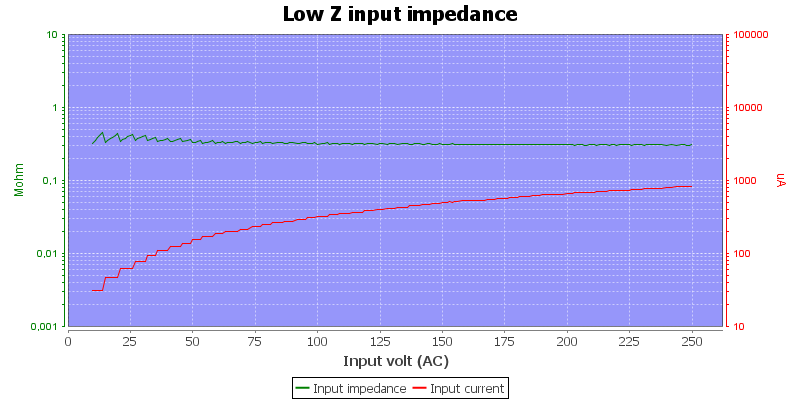
Input impedance in LowZ mode.

Tear down
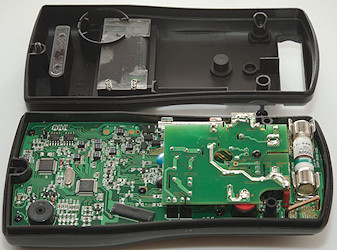
I had to remove 3 screws to open it.

Notice the two springs on the battery holder. There is also some plastic that goes between ground terminal and mAuA terminal.

There is a lot of slits in the input circuit board.
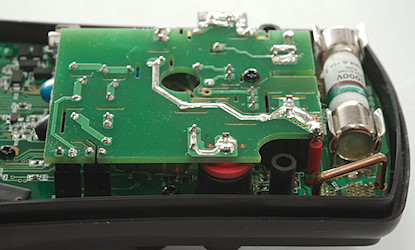
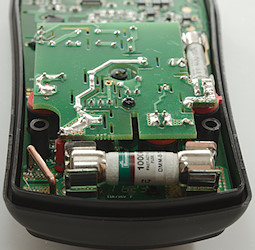
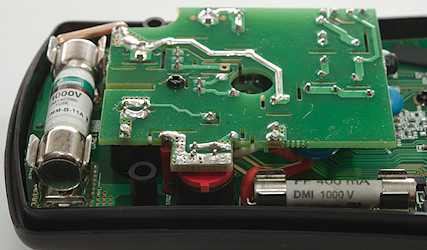
Input board has both wired (for 10A and mAuA) and connectors to the main circuit board.

I had to remove one screw and desoldering two wires before I could remove the input board.
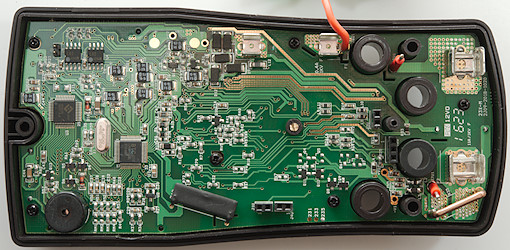
Main circuit board is shaped like the meter and is mounted with a lot of small screws (6).
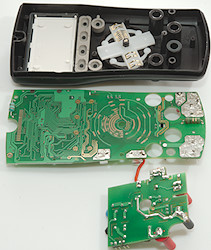
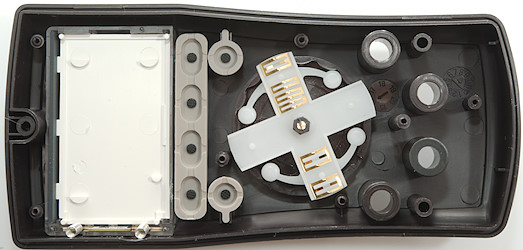

Display uses a black zebra stipe for connection and two springs for backlight.
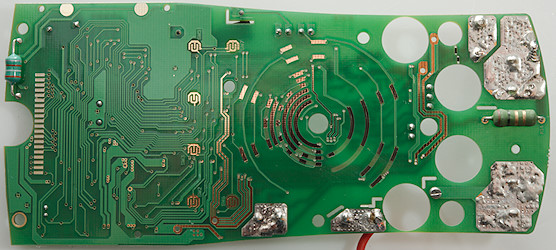
One this side of the circuit board is all the switches and a resistor for the mA range. The other part is probably an inductor for the boost converter that supplies the backlight. There is also a 3 pin chip (U2: marked R11), I wonder if it is a reference. There is two EEPROM memories (U4 & U5: Marked L02, 6246W) for calibration and remembering last settings.
It looks like many of the transistors are used for protection, but there is also the backlight boost converter (Q13).
The antenna for the NCV is near J1 and is on both sides of the circuit board.
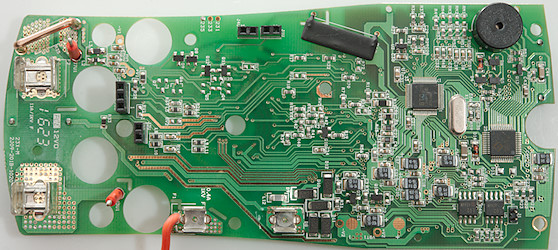
Most of the meter is on this side of the circuit board. There is a DMM chip (U1: marked BTC J200, LP6A-0000, R780H.F) and a LCD driver chip (U3: HY2613C). The long black square resistor is the main input divider (10Mohm).
The 5 large diodes (D8, D9, D10, D11, D12) is protection for the mAuA shunt resistors. The uA shunt (R33: 100ohm) is placed close to the holes for the input terminals.
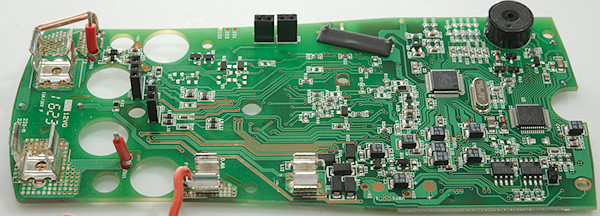

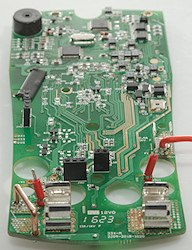
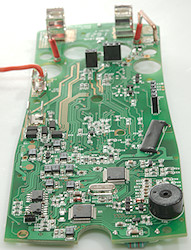
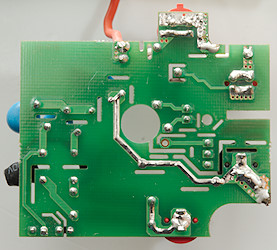
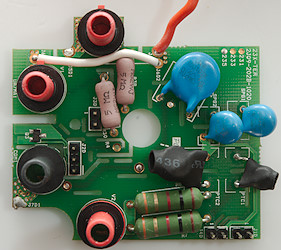
The input board contains the four input connectors and some protection.
The two pink resistors (R30 & R38: 5Mohm) is for sensing if something is plugged in, they are also large enough that 1000V with a blow fuse will not do any damage. The resistors (R7 & R8: 1Kohm) are series resistors for the two PTC (PTC1 & PTC2), followed by 3 MOV's (SPG1, SPG2,SPG3). All this limits the voltage and current that gets to the main board.
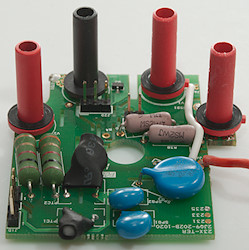


Conclusion
This is a fully featured DMM with a few extra functions like NCV, average, VFD and Low-Z, but it is missing duty cycle. The idea about remembering the last selections is both good and bad, it means the DMM mostly will be in the desired function, but it also means I have to check the display for function each time.
As usual the burden voltage is bad in the high mA range. The UL listing probably means the CAT ratings are correct according to US standards.
It has one problem and that is the behavior when the battery is nearly empty, a good DMM must never show wrong value!
I will call this a good DMM to use for both hobby and professional usage.
Notes
This meter is frequently sold in more or less rebranded versions.
The EEVBlog sells this meter with a blue sleeve.
How do I review a DMM
More DMM reviews
 : Resistance and continuity.
: Resistance and continuity.
 : Diode and capacitance.
: Diode and capacitance.


























 : Resistance and continuity.
: Resistance and continuity.
 : Diode and capacitance.
: Diode and capacitance.


























